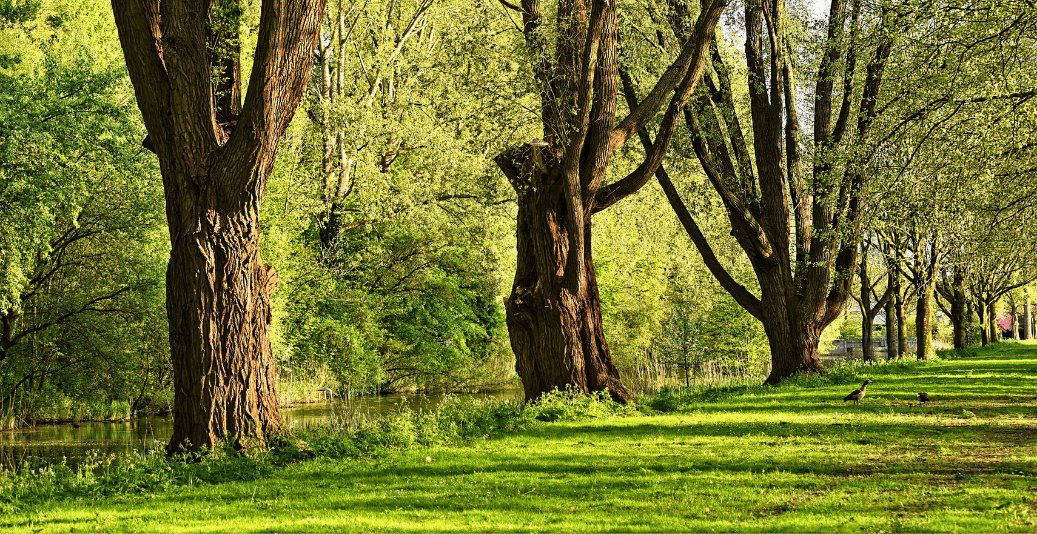How Can Recreation Support Communities?
Needless to say, we all enjoy recreation. Taking time to enjoy leisure activities and fun is critical for all of us to live healthy, enriched lives. Particularly for children, recreation is an important part of their development. Recreation facilities and parks departments play an important role in developing the community spirit of the town, city, district or regional municipality they represent—and the ways that they support communities is immeasurable.
The Value of Recreation
The National Recreation & Parks Association (NRPA) breaks down the value of parks and recreation into three essential services to communities:
- Economic value
- Health and Environmental benefits
- Social importance
"Just as water, sewer, and public safety are considered essential public services, parks are vitally important to establishing and maintaining the quality of life in a community, ensuring the health of families and youth, and contributing to the economic and environmental well-being of a community and a region."
Benefits of Recreation in Supporting the Community
Let's dive deeper into all the ways that parks and recreation enriches our communities.

Social Inclusion and Equity
The strongest communities are the ones that put in an exerted effort to promote inclusion and equity in their public spaces. Inclusion is not about filling a quota, it is about broadening the representation of members of our society who may have been marginalized in the past.
There are many examples of how facilities can be inclusive:
- Adopting messaging and language in your facilities that is more inclusive of marginalized communities.
- Offering audio cues, including text-to-speech and braille, for people who are legally blind.
- Offering visual cues, including sign language interpretations and captions, for people who are deaf or hard of hearing.
- Adding wheelchair accessible openings, as well as elevators to facilities with more than one floor.
- Adding gender neutral restrooms for people who don't identify as male or female, or as non-binary.
As outlined in NRPA's Inclusion Guideline For Developing An Inclusion Policy, a vibrant, strong community comes from an environment where everyone feels welcomed and respected. As NRPA states, one of the first steps to achieving inclusion is recognizing that 'our differences are not the obstacles, rather, a lack of knowing how to approach differences to ensure everyone succeeds is the obstacle.' Recognizing this starts with training staff to understand these principles, and promote them with each other.
Individual Health Benefits
At their core, recreation services promote physical health and fitness. But they also have peripheral benefits for communities, including for emotional well-being and mental health. According to an NRPA poll, 3 out of 5 respondents said they would take up walking or jogging in local parks, trails or around their neighbourhoods if advised by their doctors to be more physically active.
A report on numerous studies from the American Journal of Preventative Medicine found that 'exercise facilities, including parks, that are conveniently located (as measured by self-reports) have been found to be associated with vigorous physical activity in a number of studies, among both adults and children.'
Furthermore, it noted that 'several reviews of exercise and depression research indicate that exercise reduces depression symptoms among people diagnosed with depression by three fourths to one standard deviation and among people without depression by about one half standard deviation.' This report also showed that there is a link between park usage and health, and that the most common reasons people may not use parks are:
- Lack of time
- Money
- Personal health
- Information
- Transportation and access
- Safety concerns
- Maintenance and/or inadequacy of park facilities
- Lack of leisure companions
This report also indicated that older adults, minorities, women, and families with lower-incomes are more likely to be infrequent or nonusers of parks, corroborating what previous studies have found before.
Economic Benefits
We've discussed numerous social and health benefits of investing in parks and recreation. But what about the bottom line—the economic benefits? An executive summary report from the NRPA found that 'local park and recreation agencies generated $166 billion in economic activity and supported more than 1.1 million jobs in 2017.' This same report indicated that recreation also paid for $50.8 billion in salaries, wages and benefits.
While these numbers refer to the direct economic effects of recreation in communities, there are several indirect effects that they have on the livelihoods of cities and towns everywhere. According to the same NRPA report, "economic research has demonstrated consistently that homes and properties located near parklands have higher values than those located farther away."
A report from NRPA on the value of parks and recreation noted how much economic value parks have, including:
- Increased property values: Private property values tend to increase the value of privately owned land if it is closer to a local park. These higher home values not only benefit the owners of these properties, but they also contribute to the a local government's tax base.
- Billions saved in facility costs: According to estimates from American Forests, trees cities save $400 billion in storm water retention facility costs.
- Relocations for businesses: When businesses move, one of the most cited reasons is the quality parks and recreation.
A large majority of respondents—to the tune of 85%—reported to the 2019 Engagement with Parks survey indicate that high-quality recreation amenities are high up on the list of assets they seek when choosing a place to live.
Environmental Benefits
A whopping 93% of those asked in NRPA’s 2019 Engagement with Parks survey believe local governments must acquire, construct and maintain local green spaces near bodies of water so they can protect natural resources in their community. It is encouraging then, that the report previously mentioned from the American Journal of Preventative Medicine found several environmental benefits to local parks that studies before it have documented.
It found that parks may also play a significant role in purifying the environment, through means of the presence of trees. Air pollution within cities is an huge health concern which can cause unpleasant symptoms and long-term health issues, including:
- Coughing
- Headaches
- Lung, throat, and eye irritation
- Respiratory and heart disease
- Cancer
However, trees in urban areas can reduce air pollution by absorbing gaseous pollutants. NRPA's Power of Parks noted that a single acre of trees absorbs the carbon dioxide that one car driving 11,000 miles will produce. Having public parks in your community can provide immense health benefits, as the air and water in the area are positively affected.
As well, urban trees moderate temperatures by providing shading and cooling to an area. In the hot, dry summer months, this can be critical in reducing the risk of heat-related illnesses in city dwellers.
Peace and Development
Going hand in hand with inclusion and equity, the social health that parks provide to their communities are a real reflection of the quality of life in a community. They offer public accessible places for people of all ages and abilities—especially to those with disabilities. According to a report on the value of parks from NRPA, they "provide identity for citizens and are a major factor in the perception of quality of life in a given community."
Why is this? Parks provide a common gathering place for families and social groups, as well as for individuals of all ages and economic status, regardless of their ability to pay for access. Particularly in times where having access to open air spaces is critical to keeping the risk of spreading illness low, parks have found a new purpose in the time of COVID-19.
In several park safety resources, the NRPA outlined how communities can promote safety in their parks:
- Clear and understandable signage helps residents know where they are and how to get around, helping them be more aware of their surroundings.
- Enhanced lighting helps to ensure any and all activity are visible, potentially deterring crime.
- Physical access should be maximized by providing users with a choice of legible routes to and from park areas
- Heightened maintenance of parks can reduce the perception of fear in parks. Litter and graffiti can make residents feel a place is uncared for, and potentially an unsafe place to be.
- Using a variety of forms, colors, and textures in the landscape elements contributes to an environment that attracts people to parks.
Access to parks and recreation opportunities has been strongly linked to the reduction of crime and juvenile delinquency in the community. Research from the Project on Human Development in Chicago indicates that community involvement with neighborhood parks is associated with lower criminal activity, including vandalism.
Community Youth
Finally, parks and recreation plays an invaluable role in the lives of youth in each community. Community activities and programs for children and teens range from sports/athletic programs, to after-school programs to keep kids from staying out of trouble. According to NRPA's research paper 'The Rationale for Recreation Services for Youth: An Evidenced Based Approach', there are several positive outcomes to promoting youth-focused programs including:
- Reducing juvenile delinquency
- Increasing positive behaviors, while reducing the negative
- Exposing youth to fewer instances of violence
- Improving children’s educational performance
- Helping decrease health care costs related to childhood obesity
- Increasing how much young people can contribute economically as they grow into adults
- Helping young people develop self-confidence, optimism, and initiative
The City of Coquitlam in British Columbia, Canada's Youth Recreation Plan, echos these sentiments, stating that youth who engage in outdoor activities in nature are more resilient later in life, and have developed strong coping skills. As well, kids who participate in the creative field have enhanced learning skills, as well as a stronger interest in community involvement. Plus, getting 60 minutes or more of exercise can help children sleep better at night.

/Ensuring%20Inclusivity%20at%20Your%20Parks%20and%20Rec%20Organization.png)
/What%20is%20Parks%20and%20Recreation%20Software.png)


